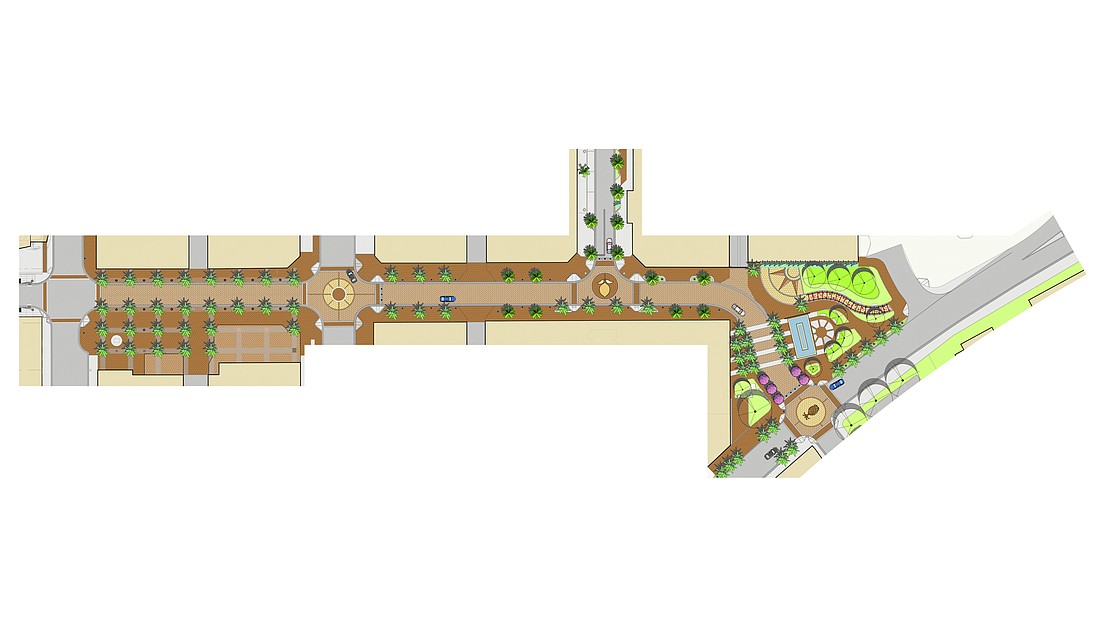- April 17, 2024
-
-
Loading

Loading

Barbra Campo has nothing against palm trees, per se.
But the downtown resident and advocate of green space does have an issue with the city’s plans to plant palm trees on Lemon Avenue as part of a larger streetscape improvement project.
Campo appeared at the Nov. 6 Downtown Improvement District meeting and questioned why the city intended to replace oak trees on Lemon with palms, suggesting it ran counter to the goal of creating a more inviting, walkable corridor.
“No one has ever said, ‘Let’s go sit by those palm trees so we can get in the shade,’ ” Campo said.
Next year, the city will begin work on a $3.7 million project to improve Lemon Avenue between Main Street and Pineapple Avenue. The designs call for bricking of the street and removal of curbs. The project will also include renovations at nearby Paul Thorpe Park.
As part of the project, the city plans to remove and replace 22 trees on Lemon Avenue and in Paul Thorpe Park, 18 of which are oaks. The removal of those trees will be mitigated, city spokeswoman Jan Thornburg said. The city intends to move three healthy oaks in Paul Thorpe Park to a location the trees are more likely to flourish. Further mitigation plans are still to be determined, but will likely include the planting of trees in city parks.
Phil Smith, a landscape architect the city hired to work on the project, said there’s a good reason why the plans feature palm trees instead of a shadier option. The problem with oak trees is that they’re too big, Smith said. Often, in an urban setting, there’s not enough room for the trees’ growing roots. That can lead to stymied growth and broken sidewalks, an issue the city has already had to deal with downtown.
Smith acknowledged there are systems that could allow for the healthy growth of shade trees on Lemon Avenue. But installing those systems would require more space than the city is inclined to offer, he said. The city wants to conduct the streetscape improvements without disturbing the underlying utility lines, which would preclude the use of devices that would prevent the trees from causing problems.
Some members of the Downtown Improvement District shared Campo’s concerns about the prospect of replacing oaks with palms. Patrick Gannon, president of the Downtown Sarasota Condo Association, questioned whether the proposal complied with the city’s tree protection regulations. But Smith contended that a healthy palm was preferable to an oak forced into a too-small space.
“If you look at a palm tree, a palm tree is going to have a larger canopy than what you have now,” Smith said.
DID board member Ernie Ritz confirmed the city had encountered problems with oak trees planted along the segment of Lemon Avenue north of Main Street.
“The growth rate is stunted,” Ritz said. “They’re not growing — and when they are growing, they’re lifting up all the bricks on the sidewalk and in the park.”
The project may also include the replacement of 20 oak trees on that segment of Lemon Avenue, if funding is available. Thornburg confirmed those oak trees are targeted for replacement because they are not growing properly.
“A young oak tree is expected to increase about one inch of caliper per year,” Thornburg said in an email. “These trees have been in for fifteen years and have only grown a few inches in caliper and provide limited shade.”
Campo remained convinced the city could find a better alternative to palm trees, even if the existing oaks proved problematic for the project.
“There’s a way to get around that,” Campo said. “You can find the right tree.”
Construction on the Lemon Avenue streetscape project is expected to begin in May and continue through November, the city announced earlier this year.
Despite the concerns from residents, the DID board made no specific recommendations to the city on the best tree for the project.
“Obviously, I agree the shade trees would be better, but I see why they’re not there,” DID board member Mark Kauffman said.